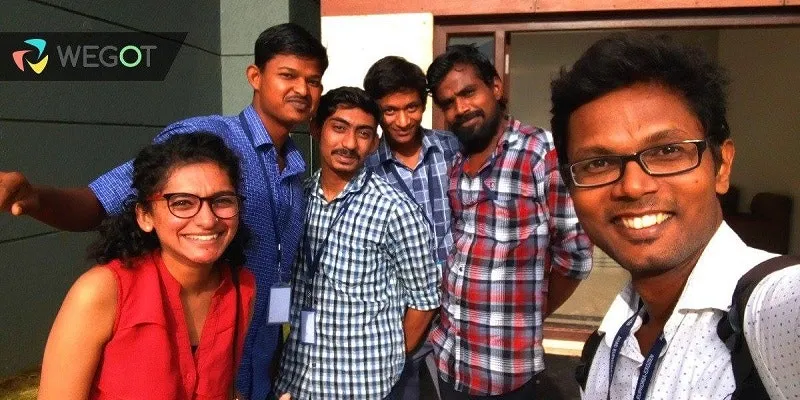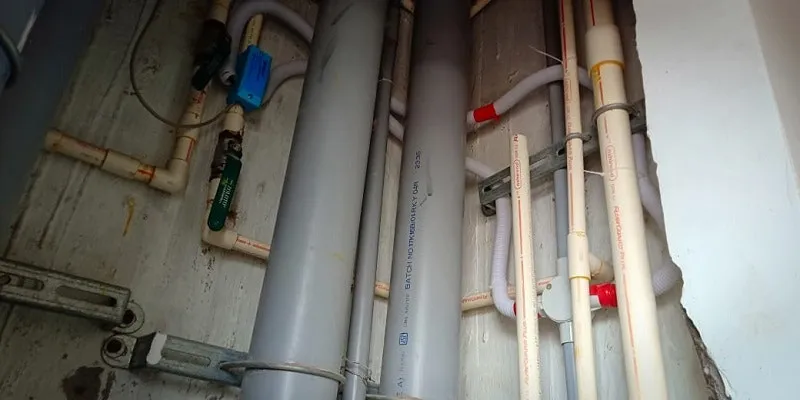Is your building using water efficiently? WeGoT’s IoT app will help you find out
WeGoT’s IoT platform VenAqua lets you manage your daily water usage with just a few clicks. Co-founder Abilash Haridass explains how this not just helps you save water, but also reduce electricity usage.
According to NITI Aayog’s 2018 Composite Water Management Index report, public water supply in India will meet only half the projected demand by 2030, resulting in extreme water scarcity for millions, and an estimated loss of six percent of GDP. With 54 percent of India’s total area facing high water stress, urgent measures need to be taken to preserve and manage existing water resources across cities if we are to avoid a crisis like Cape Town’s Day Zero.
Chennai-based water startup WeGoT Utility Solutions believes that integrated water management is a critical first step towards tackling India’s looming water crisis.
Founded by four young entrepreneurs with a passion for promoting conscious consumption of water, WeGoT’s product aims to support the adoption of sustainable water use practices at residential and commercial properties.
VenAqua, an internet-of-things (IoT) water management digital platform, captures and shares real-time data on daily water usage patterns with clients, incentivising them to save water over time. Co-founder and CMO Abilash Haridass explains, “Everywhere around us, we see billboards and messages to save water, but nobody gives you an idea of where to start -- a quantifiable and actionable way to do so. This is because we do not have access to the right data or insights from data to take the next step.” Since 2015, WeGoT has been instrumental in changing the way people treat water, and has helped save more than 300 million litres of water.

The WeGoT team at a conservation camp they held in coordination with one of their residential clients.
Also read: How this Mumbai-based duo's startup is solving waste management using tech
WRI India recently caught up with Abilash to talk about innovations in water management and the company’s bright future.
Can you tell us more about VenAqua and what it offers?
Abhilash Haridass: WEGoT’s IoT water management solution VenAqua reduces the demand for water by more than 50 percent with low cost, high precision sensors that track the flow, pressure, and quality of water. The granular data from these sensors are then applied to various water-related applications in a property. As part of the process, people become more accountable by making real-time decisions to reduce the demand for water, and increase the efficiency of the water infrastructure in every property.
You mention that VenAqua has evolved from a smart metering system to a complete water management platform. How is it different from other products in the market today?
AH: VenAqua was developed keeping in mind the three main stages of the water lifecycle in any property:
- Water sources: The first stage comprises four different sources of water including tanker lorry water, borewell water, rainwater and piped municipal water. Our water source management system tracks the quality of water when it enters the property, and ensures that there is no pilferage.
- Process and distribution: Using our algorithm, and based on water usage patterns, only the necessary amount of water is stored in overhead tanks, thus increasing the efficiency of all the pumps and other plumbing equipment in the property.
- Consumption: Once the water is delivered to the end user, VenAqua tracks the usage of every apartment, and bills each resident according to their individual usage. The system also detects leakages, broken pipes, abnormal consumption in real time, and notifies the user via the app. Once a notification is raised, the user can even shut the leaks from their phone.
Our solution provides a simple and convenient platform to manage water usage in any facility, resulting in:
- Significant reduction in water consumption;
- Cost savings on electricity required to pump and treat water due to reduced demand and hence, lesser quantity;
- Lower maintenance costs by more than 30 percent;
- Improved efficiency and management of assets like pumps, treatment plants, etc.

Installation of VenAqua in progress at an apartment building.
ALSO READ: What it will take for startups to spearhead innovation to transform urban India
Where do you see the water management market going forward?
AH: Water management is rapidly growing as the gap between the demand and supply of water is widening at a catastrophic rate. Water shortage issues will soon have to be tackled through policies and regulations that promote sustainable practices such as rainwater harvesting, solar energy applications, etc. There is a lot of opportunity to collaborate with adjacent service providers, and I look forward to more competition, because that means there are more people telling the market that this (water management) matters.
Do you have any recommendations for Indian policymakers to make business easier in the water management sector?
AH: Can you imagine a house without an electricity meter? Then, why is this true for water? In India, there is no concept of people paying for the water they use, and this needs to change. Only when you start paying for your water, will you be more conscious about consumption. Policymakers could push for policies that will measure water in every home, similar to how electricity is measured. Once this happens, users are more likely to change their mindset and consider ways in which to save water.
What are the next steps for you and WeGoT?
AH: As an organisation, we believe that it is important for everyone to be aligned with the same goal. Our immediate focus is to work towards implementing VenAqua in thousand buildings overall; if we are doing something that brings us closer to this target, we are moving ahead with it, whether that’s in R&D or sales. We are also looking to grow our team as we take on bigger opportunities. The goal is to develop a dedicated sales and operations team in cities like Mumbai, Pune, Delhi NCR, Kolkata, and Ahmedabad. Over the next six months to a year, we hope to have at least hundred members on staff.
(WeGoT Utility Solutions is one of the 10 entrepreneurs participating in TheCityFix Labs accelerator programme.)
The author, Tanuka Mukherjee (@TanukaMJ), is part of WRI India’s communications team.






